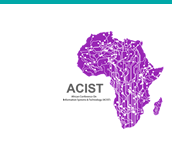Location
Harare, Zimbabwe and Virtual
Start Date
14-9-2023 12:00 PM
End Date
14-9-2023 12:30 PM
Description
An effective Information and Communications Technology (ICT) regulatory system is expected to advance regulatory consistency, independence, pro-competitiveness, consistency, competency, and accountability. These qualities will inspire investor confidence, sectoral growth, and customer satisfaction. Since we considered regulatory independence elsewhere, this paper investigates the level of regulatory consistency in developing countries. This is done using data from Zimbabwe a developing country in Sub-Saharan Africa. The study employs a Qualitative methodology, and Heeks’ (2002) Design Reality Gap (DRG) model under an interpretivist paradigm. Data collection employed in-depth interviews with purposively selected stakeholders and the analysed using Nvivo (release 1.6.1 (1136)) and thematic analysis sensitized by the constructs of Heeks’ (2002) DRG. The study contributes to practice by exploring Zimbabwe’s regulatory consistency gap and a theoretical contribution by applying Heeks’ (2002) DRG for assessing and evaluating the regulatory consistency gaps in developing countries like Zimbabwe. The study found a Consistency gap of 8 out of 10, which concluded that the regulatory framework was highly inconsistent. The resultant model shows that conflict of interest, cross purposes, expediencies, reporting structures, and competition control were the major factors presented for inconsistencies in objectives/values, management, and process of the Information Technology Processes Objectives, Skills, Management and Other Resources (ITPOSMO) components.
Included in
An Assessment of the Consistency Gap in Developing Countries: A Case of Zimbabwe’s ICT Regulatory Framework
Harare, Zimbabwe and Virtual
An effective Information and Communications Technology (ICT) regulatory system is expected to advance regulatory consistency, independence, pro-competitiveness, consistency, competency, and accountability. These qualities will inspire investor confidence, sectoral growth, and customer satisfaction. Since we considered regulatory independence elsewhere, this paper investigates the level of regulatory consistency in developing countries. This is done using data from Zimbabwe a developing country in Sub-Saharan Africa. The study employs a Qualitative methodology, and Heeks’ (2002) Design Reality Gap (DRG) model under an interpretivist paradigm. Data collection employed in-depth interviews with purposively selected stakeholders and the analysed using Nvivo (release 1.6.1 (1136)) and thematic analysis sensitized by the constructs of Heeks’ (2002) DRG. The study contributes to practice by exploring Zimbabwe’s regulatory consistency gap and a theoretical contribution by applying Heeks’ (2002) DRG for assessing and evaluating the regulatory consistency gaps in developing countries like Zimbabwe. The study found a Consistency gap of 8 out of 10, which concluded that the regulatory framework was highly inconsistent. The resultant model shows that conflict of interest, cross purposes, expediencies, reporting structures, and competition control were the major factors presented for inconsistencies in objectives/values, management, and process of the Information Technology Processes Objectives, Skills, Management and Other Resources (ITPOSMO) components.



